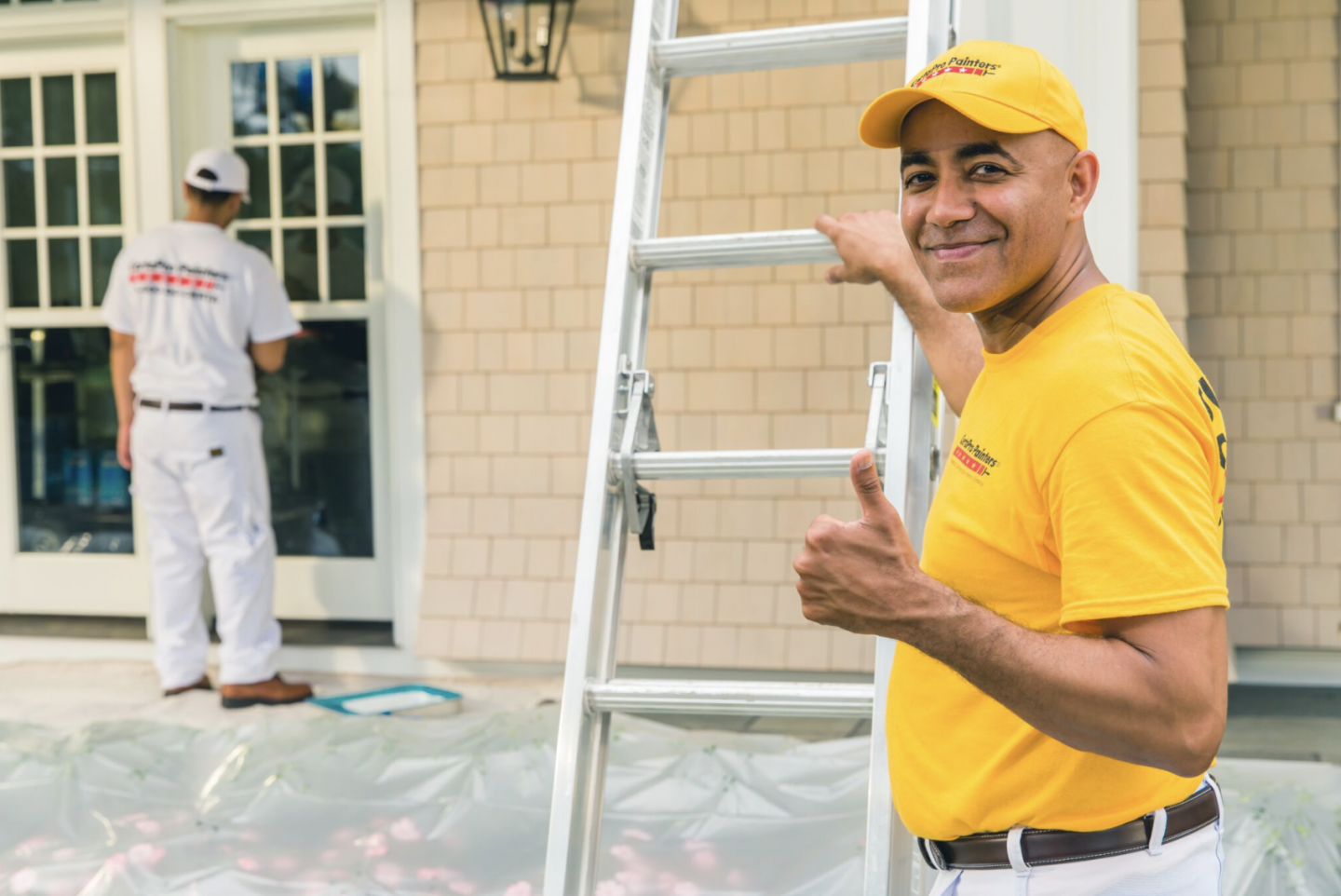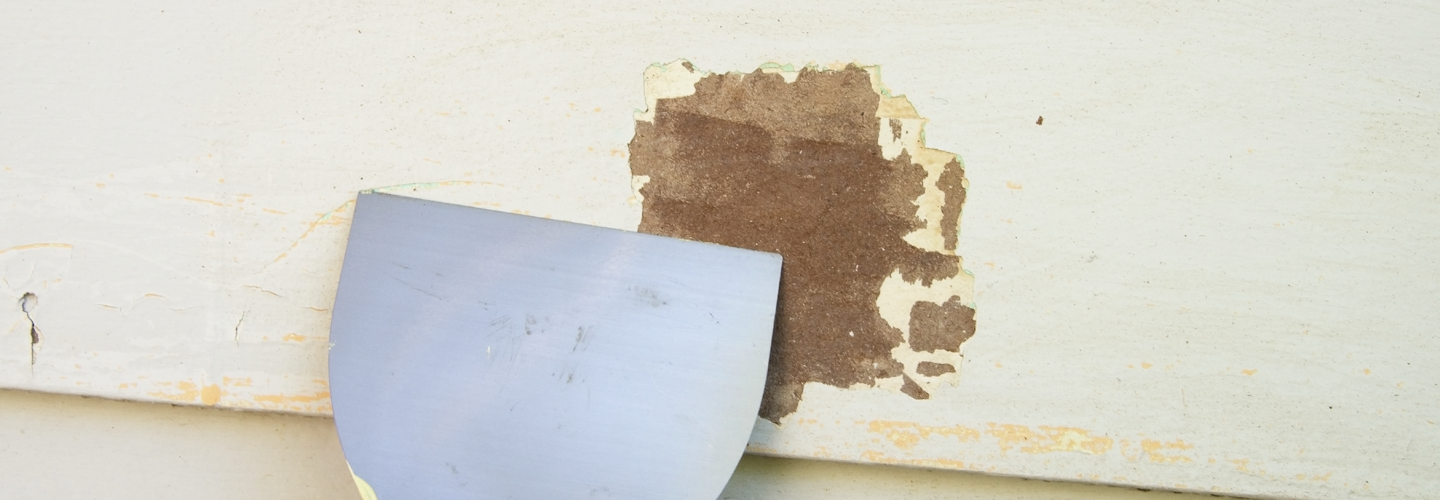
What Does Exterior Painting in Toronto Cost?
Posted on February 21, 2021
Planning on doing some exterior painting in Toronto this year? As one of the most cost-effective means of enhancing the appearance and value of your home, exterior painting is always a smart investment. Of course, it makes sense to understand the basic factors that impact the price of exterior painting, so you have some idea of what to expect based on your project specifics.
As with many home services, the time involved – which translates to labour cost – is generally the largest cost component of an exterior paint job, with product costs (such as primer, paint, sanding pads, caulking, wood filler) making up a smaller portion of the cost. With this in mind, below we’ve listed and described the three main factors which determine the cost of exterior painting in Toronto.
What are you painting?
People choose to paint a wide variety of surfaces on their home’s exterior, including the main body (which may be brick, wood, stucco, or other), wood, aluminum, or vinyl siding (full or partial), soffits, decorative fascia, eavestroughs, downspouts, shutters, windows, doors, casings, porches, railings, and more. While surface repair is often the goal (as in the case of peeling paint), from an aesthetic update perspective, virtually any surface can be painted if prepared correctly and using the appropriate coating. This opens a wide range of possibilities in terms of exterior home improvement options.
Regardless of the overall project scope, the amount of time required to prepare and paint a given surface will depend not just on its overall area or size, but its design. For example, most of a stucco home can be painted quickly and efficiently by sprayer or paint roller, whereas ornate wooden fascia or intricate iron railings require slower, more detailed brushwork. Similarly, multi-pane wooden windows and doors take longer to prepare and paint than simpler, more modern aluminum or vinyl designs.
Another consideration can be painter accessibility – elements on a second or third story, or those that are otherwise challenging to reach or work with, can require extra time. In some cases, specialized equipment and/or the support of additional painters may also be required to safely complete the work.

What is the condition of the surfaces to be painted?
As implied above, preparation is key to any proper paint job, particularly an exterior one – and this takes time, often as much or more time than painting the surface. Paint will not mask significant surface imperfections, and more critically, painting over a deteriorating or otherwise poor existing finish will almost certainly result in early coating failure – so preparing the surfaces properly prior to painting makes all the difference in producing a high-quality, lasting result. Here are some generalized examples for illustration:
Good condition – Substrates are sound, with no significant surface damage. If currently painted, the coating may be slightly faded but is entirely sound and free from cracking, peeling, or other issues.
Fair condition – Unpainted substrates such as wood may have light to medium surface integrity issues, such as evidence of general weathering. Brick may show efflorescence (mineral salts leaching out of the masonry), which requires cleaning and possibly priming prior to painting. Siding may have moderate ‘chalking’ or other atmospheric deposition, or mold / mildew in need of thorough cleaning prior to coating application. If currently painted, the coating is generally sound with some fading and/or moderate fine cracks visible on the surface, and/or light peeling which lends itself to localized sanding and priming before repainting.
Poor condition – Wood may be badly deteriorated, losing its integrity and secure attachment to the home, necessitating localized or more extensive repair and/or replacement. Brick or mortar may be visibly degraded, requiring replacement or tuckpointing (cleaning out and re-mortaring of joints). If currently painted, the coating may be heavily cracked (common with older oil-based paints) or peeling badly in several areas. The existing coating may peel or flake off easily by hand. In this case, a full stripping or sanding of the existing coating is likely required as a first step.
What new colours are being selected as compared to the current colours?
The third most common determinant of the price of an exterior painting project has to do with the chosen colour – specifically, what the new colour will be relative to the current colour. When changing from a very dark colour to a very light one (or vice versa), additional coats of paint may be required to fully hide the current paint coat, and accurately bring out the colour of the new paint. Certain very bright colours can also require additional coats. While the customer’s decision as to whether to apply additional coats must take place while viewing the work in progress, it can be helpful to bear this colours-and-coats consideration in mind when contemplating significant colour changes.
Special Situations
Although there is a wide range of special cases which can impact the cost of exterior painting, two common issues stand out:
Significant cracks or other structural issues – Depending upon the extent of the issue, masonry or other work may be required prior to surface repair and coating application. For example, significant cracks may continue to worsen if the cause is not identified and addressed, in which case any surface repair and repainting completed by your painting company is likely to be short lived. The poor brick surface example referenced above would also fall into this category.

Repairs related to water damage – in cases where surfaces display evidence of water damage, the first step should be to identify the cause and ensure it is addressed prior to painting. Depending on its extent, repairing water damage can be costly and should be investigated immediately by a qualified individual. Even if it is an older issue and the cause has been addressed, the extent of substrate damage can be difficult to determine before work commences. In the case of water-damaged wood trim for example, areas adjacent to or deeper than the specific visible site of the issue may also require repair or replacement. Given their inherent variability, surface repairs related to previous water damage are often quoted on a “time and materials” basis, following review and discussion with the customer.
What’s the bottom line?
Given the above factors, it can be seen that the project specifics determine final pricing – and in the case of exterior painting, there are so many possible variables that providing a tight estimate range is not feasible. For the sake of budgetary reference however, below are some illustrative project prices:
- Larger two-story brick home in neighbourhood of close-set lots, with aluminum soffits, eavestroughs, and decorative siding. Customer desired a refreshed look from the street. Repainting of all aluminum surfaces at front: $1,100
- Older two-story brick home with wood trim in fair condition and need of maintenance repaint. Sanding and repainting of soffits and fascia, and decorative wood downspout covers: $2,400
- Large split level stucco home in good condition. Customer wanted a full refresh prior to putting his home on the market. Full repaint, including entry door and frame, and garage door and frame: $3,700
- Large brick bungalow with extensive painted aluminum trim on all sides. Customer desired a more contemporary colour. Painting of soffits, eavestroughs, downspouts, fascia, windows and frames, doors and frames, garage door and frame, porch ceiling and posts, and foundation parging: $4,300
- Large brick split level home. Customer wanted a transformational makeover of her off-white brick to dark gray, with complementary black trim. Painting of brick, soffits, eavestroughs, window frames, and wood garage door: $4,800
- Larger old brick bungalow with intricate second story wood siding, porch and overhang, soffits, and window frames on all sides, in poor surface condition. Scraping/sanding, spot priming and repainting of all wood surfaces: $9,000
For more information on quality painting in the Toronto area, please review our Interior Painting Pricing Guide and Residential and Commercial Case Studies, and call or book online with the best painters in Toronto for a free, detailed estimate. We would be very pleased to get into the finer details of your project, to help define the best value scope for your budget, and bring your home improvement project to life!





